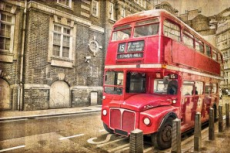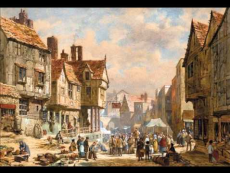
Email: ZYVC057@live.rhul.ac.uk
Total Article : 213
About Me:I'm a graduate student studying International Criminal Law and first started writing for King's News almost 4 years ago! My hobbies include reading, travelling and charity work. I cover many categories but my favourite articles to write are about mysteries of the ancient world, interesting places to visit, the Italian language and animals!

Londinium - which is known as the City of London today - was an Ancient Roman settlement around 43 AD and remained a major commerce centre until the Romans left around the 5th Century. At first, Londinium wasn't very large - in fact it occupied a space similar to that of Hyde Park. In 60/61 A.D. the Romans fled and the city was razed during the rebellion of the Iceni under Boudica. During the following decades, Londinium was rebuilt and expanded greatly, replacing Camulodunum (Colchester) as Britain's largest city.
Soon after the Romans, the Angles, Saxons and the Jutes came to the British island. Whilst they were mainly interested in farming land, many moved to the London area where St Paul's was built in the 7th Century. Unfortunately, we do not know much about London for the following few hundred years, although during the 9th and 10th Centuries there were many attacks by the Vikings. In fact the famous nursery rhyme "London Bridge is falling down, Falling down, falling down, London Bridge is falling down, My fair lady" is thought to be an oral narration of an attack against London by the Viking, Olaf, at the beginning of the 11th Century.
In 1066, The Normans invaded Britain from France during the infamous Battle of Hastings which resulted in William I (also known as William the Conqueror) taking control. It is under his rule that one of London's most famous buildings was build, a building which has a dark history of both entertainment and ruthless punishment: The Tower of London. The tower has been used as a castle, a zoo, a mint (a place where money is made), a weapons store and a prison to some of the most infamous faces of Medieval British History including Queen Anne Boleyn.

Throughout these centuries London continued to exist within the original Roman walls. Rubbish filled the streets and houses were made of wood and plaster. A grippingly gruesome smell of urine filled the streets as the River Thames became thick with human sewage.
London's importance was officially noticed when, during the 13th Century, the King called on the city to elect its first Lord Mayor, who would be re-elected each year. One of the most famous early mayors was Dick Whittington, who was Lord Mayor four times between 1397 and 1420. As we approach the Tudor age London's prominence as a political theatre increased greatly. London thus took centre stage for its exquisite recitals, courts and entertainment for the rich elite. The city was a prime place to venture to for balls and gala dinners in order to find the perfect husband. Many deer parks and palaces were established in London during this time. The parks were fuelled by the court's love of hunting and Richmond Park remains an amazing jewel and great escape from the hustle and bustle of daily London life with the deers now being protected and hunting banned. The Thames was prioritised for Britain's navy expansion and fleets set out to explore the unknown world, with key discoveries such as the Americas and India occurring in this period.
Image1:
http://www.eastlondonhistory.co.uk/wp-content/uploads/2013/07/east-london-transport.jpg
Image2:
https://i.ytimg.com/vi/UbnoRw6fZs8/hqdefault.jpg

0 Comment:
Be the first one to comment on this article.